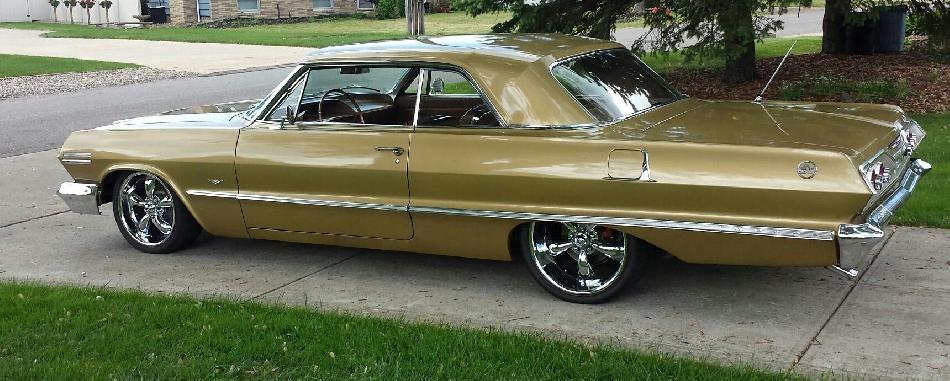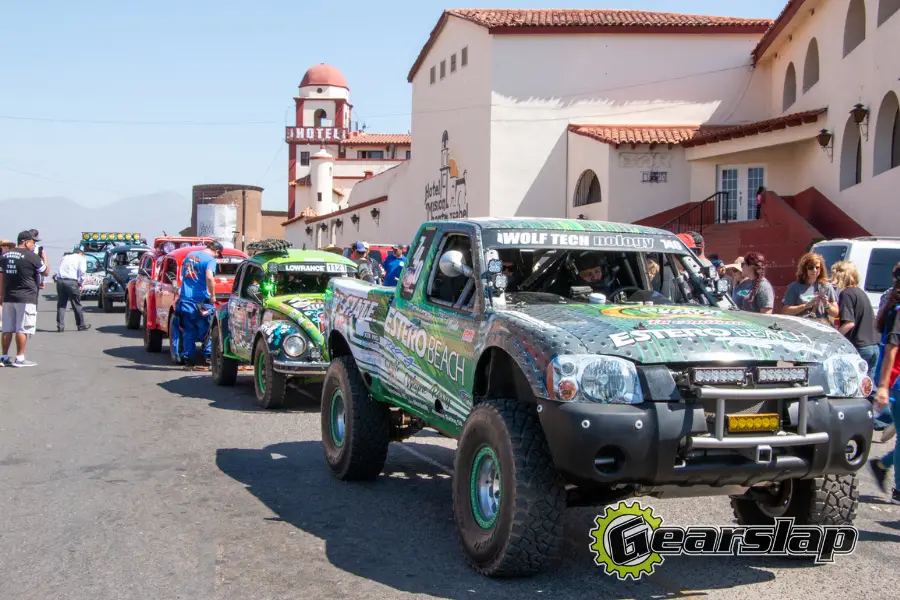One of the most adrenaline-infused activities happens as a spectator at a NASCAR, IndyCar, or F-1 race. I know for me, 43 race cars barreling down the straightaway at Talladega full throttle was an unforgettable feeling. It even made me forget the $8 beers and long lines for parking.
As a sport, virtually no one can walk away from a professional race unimpressed. Racing encompasses many different forms. What you like might differ from the type of racing I prefer, which might diverge from the racing the next guy likes.
Let’s review the most popular types of racing.
Road & Track Automotive Racing
The USA has over 1,000 different race tracks, not counting unsanctioned racetracks or road courses with no set boundaries. Just like with people, each has its personality and quirks.
Three Primary Categories
In professional racing, there are three main types of racing. Each has its footprint, although there are similarities across all forms of racing.
Open Wheel Circuit
Open-wheel racing at its most basic involves cars with wheels located on the vehicle’s exterior. Popular forms of open-wheel racing are the F-1 and Indy car series. While other types of racing rely on pure speed and driver reaction plus a pit crew to make most vehicle adjustments, open-wheel racing employs technology that controls acceleration, braking, fuel mileage, and on-the-fly adjustments to help the vehicle get around the track.
Open-wheel racing vehicles are custom designed and built, rather than relying on a sanctioned template. There are famous ovals where open-wheel cars compete, but none more so than the Indianapolis 500. Most open-wheel races run on a circuit track.
Closed Wheel Circuit
Closed wheel circuit racing vehicles have wheels contained within the body. The most famous closed wheel racing is NASCAR, and its most popular race is the Daytona 500. GT and other sports car racing are also considered closed wheel racing.
Just about all closed wheel racing vehicles are based on a template provided by the sanctioning body of a racing organization. NASCAR, for example, has an exact template that teams must meet within a certain threshold, or the vehicle will be disqualified. Closed-wheel racing generally happens on an oval, and speeds on some tracks can exceed 200 MPH.
Experimental/Prototype
The purpose behind experimental or prototype racing is that a hybrid vehicle competes at the highest possible level. It is considered elite racing, and usually, only the best and most successful racers run in a race.
Experimental vehicles are not for use in the commercial production of cars. The prototype vehicle is designed and manufactured to race and to win races.
Prototype racing began sometime right after World War II. Most racing circuits have prototypes that will migrate over to a racing series once any issues concerning its performance are addressed. Prototype vehicles are allowed a great deal of flexibility when it comes to design and implementation.
Different Types of Road & Track Racing
Within those three categories, there are different types of race tracks and courses. As with the open and closed-wheel racing, there is overlap in many tracks and the racers.
Stock Car (NASCAR)
Of all the types of racing, stock car racing under NASCAR in North America is the most famous because it pertains to an entire racing circuit (the Indy 500 is just a race.) NASCAR has historic race tracks around the country, and drivers are awarded points based on placement within a race and winning a race. Those points go towards playoff seating.
As mentioned, NASCAR has several very famous tracks. Those include superspeedways like Daytona and Talladega, medium tracks like Charlotte and Darlington, and short tracks like Bristol and Martinsville. Racing events occur on two road courses. Other famous races happen in Texas, Las Vegas, New Hampshire, Michigan, Atlanta, and – of course – on the Indianapolis oval race track.
Indy
IndyCar racing is open-wheel and includes its flagship track at Indianapolis, home of the Indianapolis 500. Indy is a sanctioning body for:
- IndyCar
- Indy Lights
- Indy Pro 2000 Championship
- USF2000 National Championship – part of the “Road to Indy’
- Global Mazda MX-5 Cup
The IndyCar organization is a member of the Fédération Internationale de l’Automobile (FIA) through the Automobile Competition Committee for the United States.
Today, Roger Penske owns IndyCar through the Penske Entertainment Corporation. IndyCar vehicles primarily race road courses, although there are several ovals included in the race schedule.
Formula 1 (F1)
F1 is the elite of the international racing series. The “Formula” in F-1 refers to the ruleset and template that all race teams must follow. F-1 vehicles are the fastest road course racing vehicles in existence, known for their fantastic cornering abilities at astonishing speeds. F-1 runs mainly in Europe, but it also has a healthy slate of international racing tracks.
Autocross
The premise of this form of auto racing is to serve as a stepping stone for young or unknown but skilled drivers as they race against a timeclock. The course tests driver skills at virtually every inch of the racecourse. Races vary in length but generally are between 1.5 and a little over 2 miles.
Just about any vehicle can compete in an autocross event. Speeds tend to be slower, often not exceeding highway MPH. The challenge is having the driver skill and precision needed to execute multiple turns quickly. Additionally, autocross races incorporate several types of race features, including racing on dirt.
Drag Racing
Drag racing is the one type of auto racing that any streetcar can do at any red light, although the risks are significantly higher for sports car racing in a public road environment than actual drag strips. Official drag racing is straight-line racing done by automobiles or motorcycles. The goal is to beat your opponent directly and record the highest score of the drag racing event across all competitors.
The most common distance for drag strips is ¼ of a mile. In addition, drag racing 1,000 feet and 1/8 of a mile are also gaining in popularity. Race sensors score results. Automated timers monitor each vehicle from start to finish and record the vehicle’s time.
Drag racing has been around, really since someone jumped on a horse and challenged a friend to race to the end of the pasture. Motorized drag racing has been around for as long as vehicles have existed. It has involved every type of car, whether at an official race or your local traffic light.
Circle Track / Dirt Track
Circle track racing is a closed circuit where professional drivers only turn in one direction. The track is oval or circular. Turns at the end of straightaways usually have a bank. Some vehicles that race on circle tracks include stock cars, modified and midget cars, open-wheel vehicles, and motorcycles.
A dirt track is a circle or oval, but the racing surface is dirt instead of concrete or asphalt. Many have banked turns. However, the banking is often small, and a few only have portions of the track rooted in the dirt. These tracks are located across the USA, mainly because they are easy and inexpensive to build and maintain.
As a proving ground, racing on mud or dirt has launched careers of NASCAR legends, including both Tony Stewart and Jeff Gordon.
Drifting
Drifting is not so much a form of racing as it is a style of racing. It can be done on ovals and road courses and is a driving technique where the driver oversteers going into a corner, lets the car lose traction in the back (the vehicle is “loose”), and lets the vehicle “drift” through the circle.
Experienced and skilled professional drivers can drift through an entire corner with barely a speed modification.
A tactic called clutch-kicking purposely loosens rear-wheel grip to allow for skidding. Once the grip is lost, the driver intentionally oversteers and then counter-steers to keep the center of balance of the vehicle constant.
Outlaws/Midgets
The World of Outlaws is a sanctioning body for a particular type of vehicle. It is most well known for sanctioning sprint cars in the World of Outlaws Sprint Cars Series. It also has a late model series. Both types of racing are on dirt tracks.
Sprint cars have an oversized, adjustable wing on the top of the vehicle and larger rear tires that add traction and transfer power to the dirt track. The late-model vehicles utilize the same technology. Theoretically, both help keep the car “glued” to the track, allowing for more precision drifting.
Midget cars are a class of racing cars typified by a very high power-to-weight ratio. The concept is a US creation, although it has been picked up all over the world. Within the midget series, there is the full-size race car, three-quarters that fall a little under the full size, and then for younger people, the Quarter Midget racing circuit.
Camion (Truck Cross / Semis)
This type of racing involves heavy tractor machines racing on ovals and oval track circuits. Due to the weight of the trucks, there is a speed limit and a minimum weight requirement. The most notal Semi truck race happened in the movie Smokey and the Bandit in 1979.
Endurance Racing/Rally (sanctioned & unsanctioned races)
This type of racing combines speed with the durability of the rally cars and the endurance of the participants. The racecourse covers a very large distance, often more than 500 miles. Endurance races are judged by speed, distance, or both in a set period, often lasting up to 24 hours.
Drivers divide time behind the wheel, usually based on the skillset of the driver. A driver usually must complete their segment of the race, or the team is disqualified. With some races, there is leeway regarding when a driver relinquishes control, but there is always a maximum amount of time, distance, and laps one driver can complete.
Le Mans
The 24 Hours of Le Mans is one of the most famous endurance races in the world. It is an annual event held in Le Mans, France, and has a few remarkable qualities:
- Oldest active endurance race
- Distance race versus a timed race
- Includes private and public roads as well as dedicated sections of a race track
Organized by the Automobile Club de l’Ouest, and held on the Circuit de la Sarthe, LeMans is one part of the Triple Crown of Motorsport (with the Indianapolis 500 and Monaco Grand Prix).
The race pushes the limits of man and machines, resulting in the following:
- Greater fuel and tire efficiency
- Stronger equipment
- Aerodynamic innovation that has stabilized vehicles at high speeds
Cannonball Run
The Cannonball Run is an unsanctioned endurance race for all types of cars that starts on the East Coast in New York or Connecticut and ends in Redondo Beach in Los Angeles, California.
The record for the race is 25 hours 55 minutes completed by Fred Ashmore, who averaged 108 miles per hour. These types of road races are generally illegal because they involve the deliberate violation of speed and safe driving laws.
Other Endurance Races
Besides the Cannonball Run, the most notable endurance race in the USA is 24 hours at Daytona. Other endurance racing events of note are 6 Hours of Watkins Glen, the Petit Le Mans, and 12 Hours of Sebring. The rules generally are the same across the races.
Fastest Mile / Top Speed / Land Speed Records
Because there are so many types of auto racing, getting the fastest mile is difficult. JR Carr in the Mountain Motor Pro Stock series recorded a top speed of 228 MPH. Consistently, F-1 or IndyCars clock in over 210 MPH, making them the fastest of the major racing circuits.
NASCAR vehicles routinely get in the 207 range on superspeedways like Daytona and Talladega. The fastest F-1 car ever recorded was driven by Juan Pablo Montoya, who clocked in at 231.52 MPH at the 2005 Italian Grand Prix.
Hooligan / Super Hooligan / Bucket Racing
These are motorcycle races. The tracks are usually flat, and the street bikes have slight modifications. Most series racing has a stock frame that must be used, but in some cases, the bikes are showroom quality.
Off-Road Racing
Off-road racing is a breed of its own. It mixes weather and course extremes with durability and endurance requirements. Plus, you have to drive fast, avoid locals trying to disrupt you, and watch out for natural hazards that could end your race.
Desert/Baja
The Baja 1000 began in 1967 and is an epic endurance race that attracts professional racers, thrill-seekers, and amateurs. It is the longest point-to-point, motorized race and is a wild affair, precisely because the course is ungovernable. The first Baja races provided racers a way to race without interference from the government.
The race itself hosts multiple types of vehicles that run against other cars of the same make. The course is exceptionally challenging, and it is often made worse by volatile and unpredictable weather.
Rallying / Rally Racing
In rally racing, contestants race on public and private roads using modified but street-legal vehicles. The races are usually point-to-point, and drivers can win by speed within each stage or by achieving the best journey time.
The professional rallies are called “stage rallies,” which are segmented and cover different types of roads and environmental conditions. The races happen on closed roads, and the road surface alternates in make, quality, and navigability.
Road rallies take place on highways, and the emphasis is not on speed but on timekeeping, navigational skills, and vehicle durability. Road rallies are primarily amateur events, although they occasionally attract celebrities.
Stadium / Arena Racing
This type of racing is specialized, usually involving hybrid tracks or vehicles.
Stadium Super Trucks / Off-Road Short Course
Former NASCAR and IndyCar driver Robby Gordon created this American and Australian short course, off-road racing series in 2013. Most of the races are street circuits and road courses. Races are frequently run in conjunction with IndyCar races and events. The series initially took place in football stadiums, accompanied by other attractions like monster trucks and quad bike competitions.
The trucks are formula-driven, starting with a 600 HP engine, a three-speed transmission, and a top speed of 140 MPH. Drivers can modify some aspects of the truck, but the basics must be left as they were delivered.
While in NASCAR, Robby Gordon noticed that the teams that did the best were the best-funded. He also realized that under-funded teams rarely did well. The truck design in the Stadium Super Trucks series gives everyone a fair shot, regardless of how well funded an experienced team is or how underfunded newer teams are.
Tough/Tuff Trucks
Tuff Truck racing is off-road and is usually loosely affiliated with a Monster Truck Show. The trucks are closer to street-legal than most racing series trucks, and the races take place on a Monster Truck course. As you can imagine, running an everyday truck over a Monster Truck course does not usually end well for the truck or the driver.
Competitor trucks are divided by class (stock, modified, 2WD, and 4WD). Each course has similar but slightly different rules, and it is not uncommon for there to be several racing formats across multiple venues. Types of racing include but are not limited to timed heats, collective fastest times over numerous races, and wheel to wheel.
Monster Trucks
Monster trucks race on short, indoor tracks (primarily) with obstacles the truck must maneuver over or around. These can be junked vehicles, ditches, and dirt mounds; it is not uncommon to have more than one competitor flip while negotiating the course.
The construction of monster trucks includes military-grade chassis, hydraulic steering in the front and rear, and dual controlled front and rear steering. For many fans, the tires are the story. Typically, a Monster Truck tire is 66-inches in diameter, 43 inches in width, and runs on 25-inch diameter rims.
Demolition Derby (not necessarily a race: last car standing)
Demolition derby is not a race but rather an endurance contest where cars run into each other and force opponents to stop participating by breaking their vehicles. These events usually occur at special events like fairs and carnivals, etc.
Rallycross
In rallycross races, the track is closed, the surface is mixed, and the vehicles are custom built. It is popular in northern Europe. Rallycross also is a form of buggy racing in Europe. The cars have an incredible speed-to-weight ratio, which can make them dangerous.




